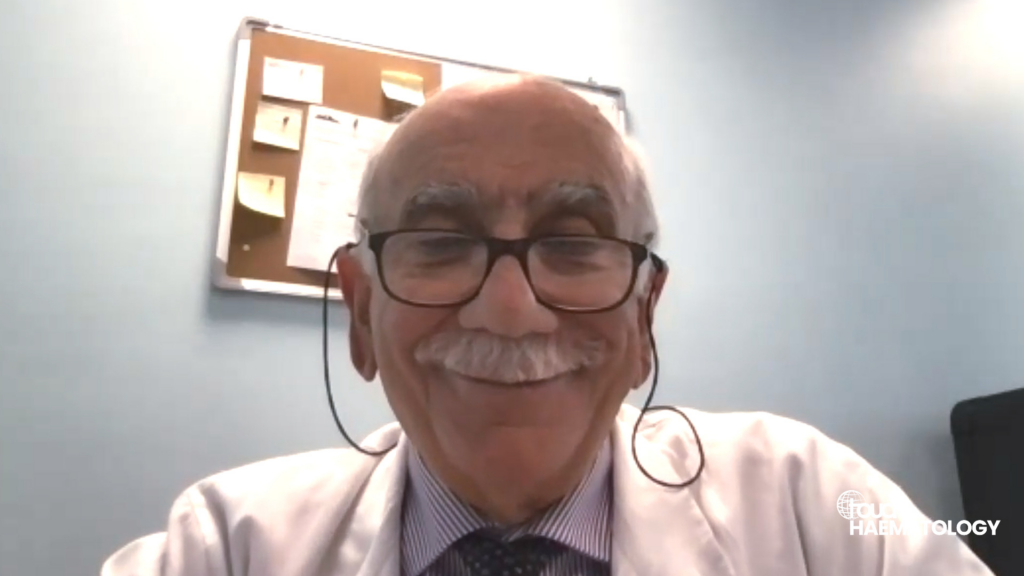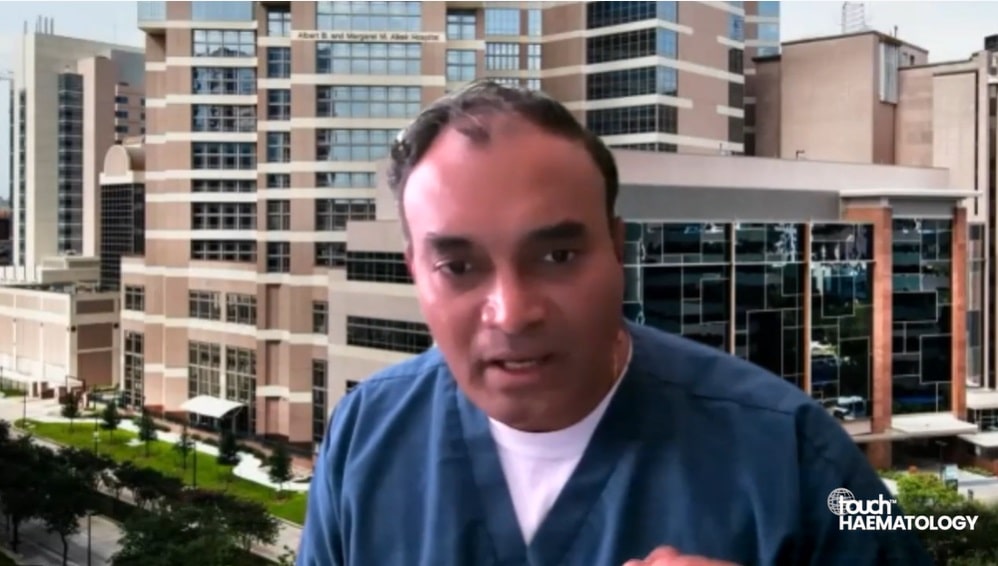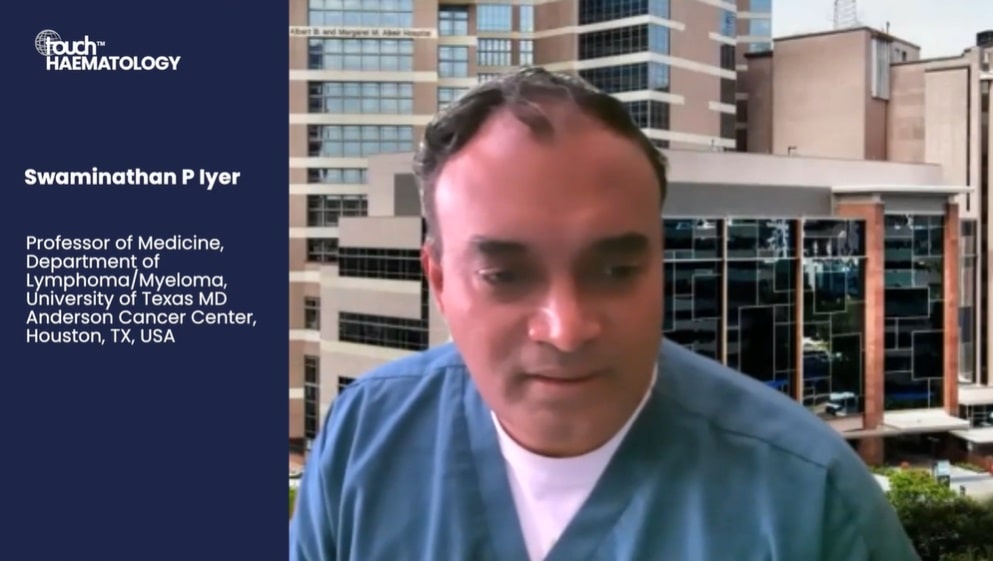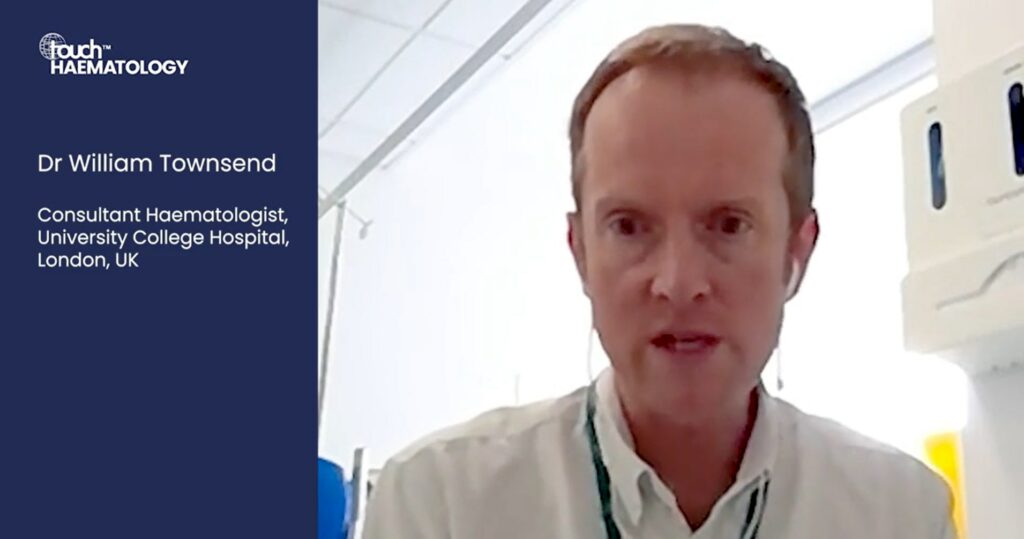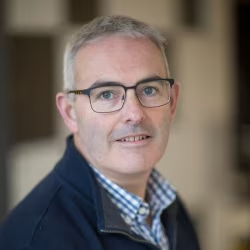
“Liquid biopsy could overcome some of the major logistical barriers to tumour profiling”
Genomic technologies are reshaping our understanding of diffuse large B cell lymphoma (DLBCL). Dr Dan Hodson (Principal Investigator, Cambridge Stem Cell Institute, Cambridge, UK) discusses the implications of molecular subtyping, the persistent challenges of clinical implementation and opportunities for improving precision treatment strategies, like liquid biopsies.
The presidential presentation, ‘TRANSCRIPTIONAL REPROGRAMMING AND SURVIVAL CO-DEPENDENCIES OF CHRONIC LYMPHOCYTIC LEUKEMIA RESISTANT TO VENETOCLAX)’ (LB4003) was presented at the European Hematology Association (EHA) 2025 Congress from June 12-15th in Milan, Italy.
Q1. How have genomic profiling techniques transformed the classification and management of aggressive lymphomas in recent years?
For several decades we’ve predominantly treated DLBCL as a single disease. What’s become clear over the past five years or so is that, when we look in detail at the genetic changes or mutations within DLBCL, it appears to consist of at least five, six or perhaps seven distinct molecular subtypes. This was initially shown by two US groups – from the Staudt group and the Shipp group – around five years ago, and then confirmed by our group in the UK.
What’s striking is the level of consensus across these studies. We’re identifying the same genetic subtypes, which gives us confidence that these distinctions are real. That level of agreement is quite unusual.
When you examine what’s mutated in each subtype, it’s clear the biology is completely different – these subtypes rely on different activated pathogenic pathways. That strongly suggests they will respond differently to targeted inhibitors.
Q2. What are the key takeaways from your presentation, ‘Deciphering the Genomics of Aggressive Lymphomas’?
On the positive side, we now have a comprehensive overview of the genetics of DLBCL, and I think there’s general clarity around the key genetic subtypes.
On the more uncertain side, there’s still a lot we need to understand about the specific biology and therapeutic vulnerabilities of each subtype.
And perhaps more pessimistically, we’re currently struggling to implement this knowledge in clinical practice. There are a number of reasons for that, which we’ll probably get into, but one of the key messages of my talk is the gap between what happens in the lab and what happens in the clinic.
When we make discoveries in the lab, we often can’t test or validate them in clinical trials because the genetic information simply isn’t available. We can’t say, for example, “this genetic alteration seems to drive this response to a drug” without access to the underlying data. That disconnect – between discovery science and clinical trials – is something I’m really trying to highlight in my session. It’s a gap we need to address moving forward.
Q3. What are the next steps, and how do you see genomic profiling influencing treatment and outcomes over the next 5–10 years?
What I’d like to see is comprehensive molecular profiling incorporated into all clinical trials for DLBCL. That would allow us to analyse individual treatments more effectively. Even if a treatment doesn’t work across the whole trial population, it may still work within a specific subtype. When we start to look in that way, we do see subtype-specific responses. Those observations can then form the hypotheses for future trials that directly test those questions.
So it’s an iterative process: profile patients, identify signals in subtypes, then design the next study to test those findings more formally.
Q4. What are the major challenges or unmet needs in this area?
The biggest challenge is getting sequencing done in a way that is harmonised and standardised internationally.
A sobering example: if you look at the last seven major exome studies in this space, they collectively identified around 700 different driver genes. But only 10 of those were reported in all seven studies.
That tells us we’re not yet consistent in how we’re doing this work. We don’t currently have the infrastructure or logistics in place to turn around sequencing data from biopsy samples in real time – and that’s essential for DLBCL, where patients typically begin treatment within one or two weeks of diagnosis.
From biopsy to DNA extraction, to library preparation, to choosing and running the right assay and analysis pipeline – none of that is standardised. And certainly not in a way that could return results fast enough to inform clinical decisions.
Q5. What key presentations or data are you most looking forward to in the lymphoma space at EHA 2025?
I’m particularly interested in the presentations on liquid biopsy – I’m actually heading to one now.
Some of the logistical challenges I’ve mentioned, like getting biopsies processed quickly enough, might be overcome with liquid biopsy. If we can use a blood test to profile tumour DNA, that opens up huge possibilities.
Not only could it help with diagnosis, but you could also use it to monitor response to treatment. That’s a very exciting area for the future, and I’m looking forward to seeing more data on that – including a presentation from a Dutch group later today.
Browse all EHA2025 content here!
Disclosure: Dan Hodson has received grant/research support from Astra Zeneca and GSK.
Cite: #EHA2025: Dr Dan Hodson on deciphering the genomics of aggressive lymphomas. touchHAEMATOLOGY. June 24th, 2025
Interviewer: Caroline Markham
This content has been developed independently by Touch Medical Media for touchHAEMATOLOGY. It is not affiliated with the European Hematology Association (EHA). Views expressed are the speaker’s own and do not necessarily reflect the views of Touch Medical Media.
SIGN UP to touchHAEMATOLOGY!
Join our global community today for access to thousands of peer-reviewed articles, expert insights, and learn-on-the-go education across 150+ specialties, plus concise email updates and newsletters so you never miss out.


